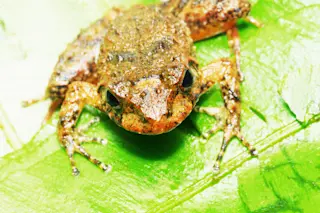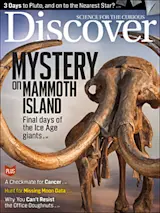Jonathan Kolby knows extinction is final. The James Cook University herpetologist studies global frog populations and their decline from the widespread and deadly chytrid fungus. Now Kolby hopes to give endangered frog populations a leg up by allowing them to develop natural resistance against chytrid in temporary captivity. An unusual brown frog in Honduras’ Cusuco National Park inspired his approach. He first spotted it while surveying amphibians with students back in 2007.
It was about 10:30 or 11 at night. Everyone was getting a little tired. We were about to head back, and I saw a frog. It was this little brown frog, pretty nondescript. I jumped into the mud and totally missed it. For the next half-hour, I proceeded to crawl around in the river. Eventually I gave up. It was gone.
In 2008, I had one chance to get back to this same location. I couldn’t believe my ...















